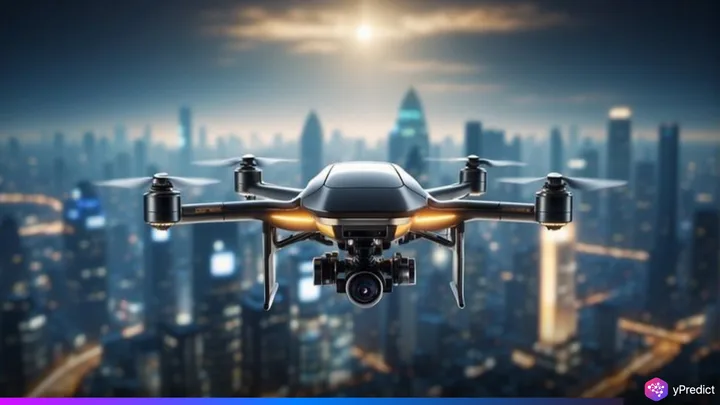
In a major shift on the battlefield, Ukraine has used AI-powered drones to strike Russian bomber aircraft across multiple airbases. The covert mission, known as Operation Spider Web, was reportedly executed by Ukraine’s security service (SBU) and directly overseen by President Volodymyr Zelensky. According to SBU sources, over 40 long-range Russian bombers, Tu-95 and Tu-22 M3 models, were damaged or destroyed in the attack. These aircraft form the backbone of Russia’s missile-launch capability. The operation signals a new chapter in military strategy. AI autonomy and precision can now rival traditional firepower. It also shows how advanced AI drone tech helps Ukraine reshape the rules of engagement.
SmartPilot’s AI Drone Tech Transforms Precision Ambush Tactics
At the mission’s core was a homegrown AI tool called SmartPilot. It was developed by Ukrainian defense tech company StratForce and the Brave1 innovation cluster. This system enables drones to fly, locate targets, and strike without GPS or live operator control. The GOGOL-M “mothership” drone, guided by SmartPilot, carries two smaller FPV (first-person view) drones. These split off during flight and operate independently once released. They use onboard cameras, LiDAR, and computer vision to detect and destroy high-value targets.
“It supports ambush missions, landing and waiting for targets, and autonomous search in real time,” said StratForce CTO Andrii. He declined to share his full name for security reasons. The AI drone replicates a human pilot’s instincts, without delay, coordination, or constant communication. These drones can fly over 300 kilometers into enemy territory. They also “land on target” if needed, a role once reserved for costly cruise missiles or risky manned operations.
Warfare Shifts as AI Drone Results Stir Red Flags Across Borders
The results of Operation Spider Web came quickly and shook the battlefield. Ukrainian officials say more than 40 Russian bombers were destroyed or disabled. The strikes took place across several thousand kilometers. Analysts estimate the attack may have damaged up to one-third of Russia’s strategic bomber fleet. These aircraft are hard to replace quickly, especially in wartime. The strikes happened far from the front lines, showing how autonomous drones can bypass air defenses and expose deep vulnerabilities.
The operation also proves that AI can carry out complex missions with little or no human input. This creates new opportunities and sharp ethical questions. “The fact that these drones can identify, wait, and strike without a pilot raises serious accountability concerns,” said one Western defense analyst. Without human oversight at each stage, it’s harder to assign responsibility for mistakes or civilian casualties. Still, Ukraine’s defense sector sees AI as a vital tool. It allows a smaller nation to counter a larger, better-equipped force with smart innovation.
Could AI Weaponry Outpace Human Oversight?
Operation Spider Web shows that AI no longer plays a supporting role in war. It now makes its own decisions. SmartPilot doesn’t just guide drones, it enables them to think, wait, and strike without human help. That shift forces new questions into the global debate. Should humans approve every AI strike? Can we embed safeguards into systems that no longer rely on us to act?
Right now, no global rules address these concerns. Yet the tech is moving fast. Ukraine is now ramping up production of GOGOL-M drones. It plans to deploy more for long-range missions. As AI expands its role on the battlefield, the world must decide where to draw the line. How much autonomy is too much? And who bears the blame when machines fight alone?






